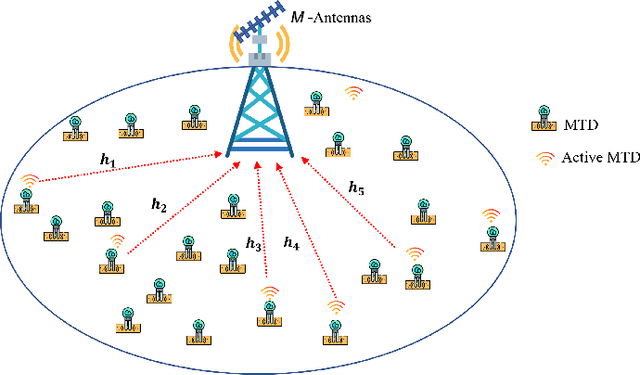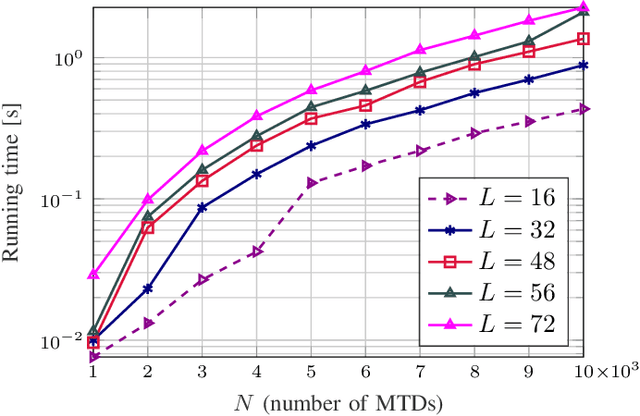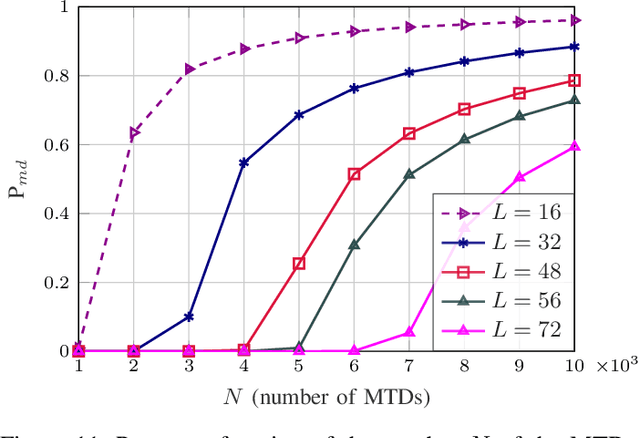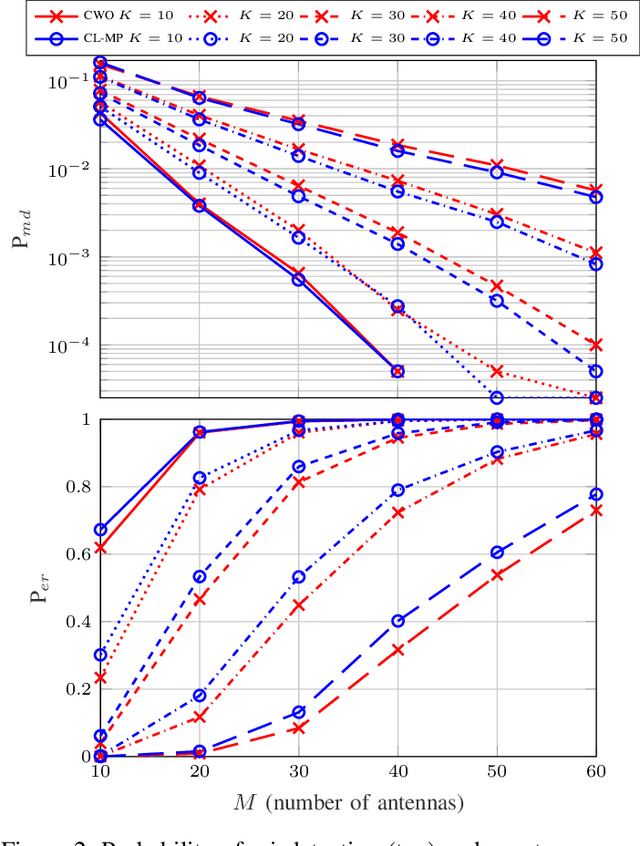Activity Detection for Massive Random Access using Covariance-based Matching Pursuit
Paper and Code
May 04, 2024



The Internet of Things paradigm heavily relies on a network of a massive number of machine-type devices (MTDs) that monitor changes in various phenomena. Consequently, MTDs are randomly activated at different times whenever a change occurs. This essentially results in relatively few MTDs being active simultaneously compared to the entire network, resembling targeted sampling in compressed sensing. Therefore, signal recovery in machine-type communications is addressed through joint user activity detection and channel estimation algorithms built using compressed sensing theory. However, most of these algorithms follow a two-stage procedure in which a channel is first estimated and later mapped to find active users. This approach is inefficient because the estimated channel information is subsequently discarded. To overcome this limitation, we introduce a novel covariance-learning matching pursuit algorithm that bypasses explicit channel estimation. Instead, it focuses on estimating the indices of the active users greedily. Simulation results presented in terms of probability of miss detection, exact recovery rate, and computational complexity validate the proposed technique's superior performance and efficiency.
 Add to Chrome
Add to Chrome Add to Firefox
Add to Firefox Add to Edge
Add to Edge